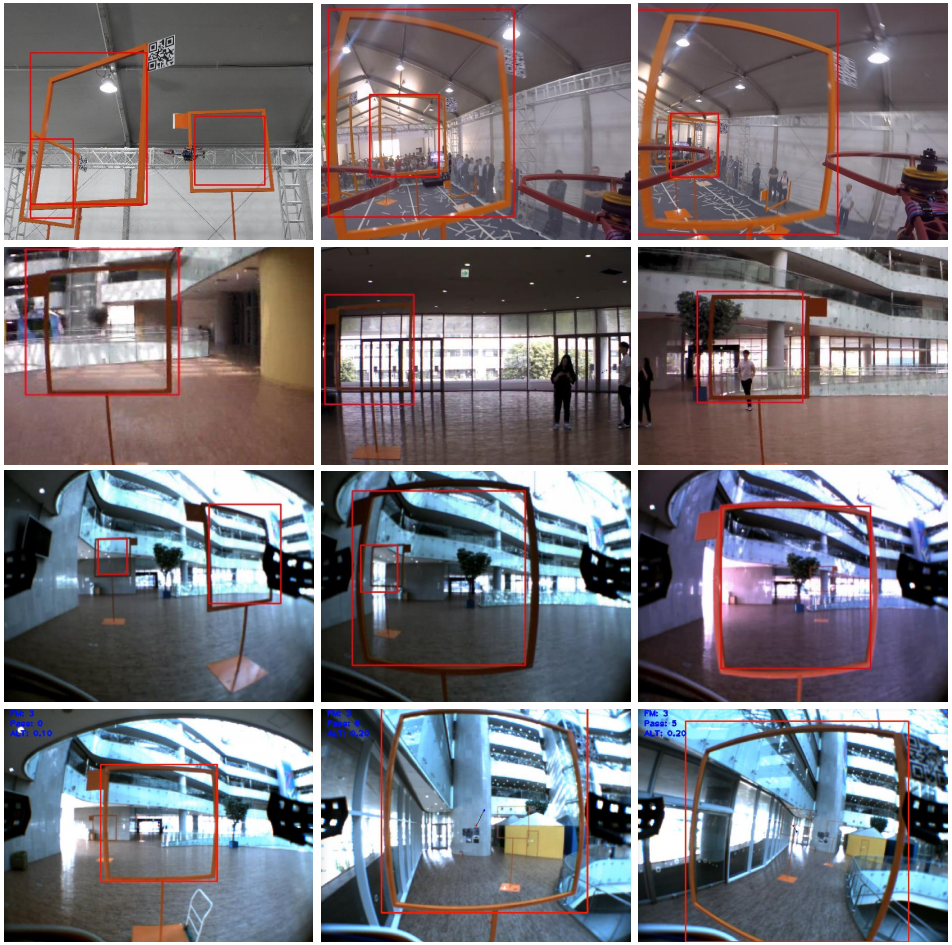Autonomous Drone Racing @ IROS 2017
The IROS 2017 ADR in Mos Eisley Vancouver Arena (Racing) is a technical challenge sponsored by IROS 2017 Organizing Committee aimed to provide worldwide robotic researchers a technology showroom for autonomous flight and to promote solutions for the agile autonomous flight of drones in daring environments. Participants will bring their own flying robots in Mos Eisley Vancouver Arena and be asked to fly them autonomously through designated tracks in the circuit. The technical challenges combine the time optimal path planning for drones, flight and tracking control, obstacle detection, localization, and fault detection and recovery. Two racing times will be recorded and scored by its best flight time through the start and the finish line.
For details about the competition, see
iROS autonomous drone racing page
.
Smart Perception and Guidance Control
for Indoor Autonomous Drone Racing
Smart Perception: ADR-Net
ADR-Net, a deep convolutional neural network model for detection,
works real-time with our MAV camera setting on NVIDIA TX1 embedded board.
ADR-Net is based on AlexNet and SSD architecture but much faster.
The base network used was the AlexNet. As our purpose was a simple gate detection,
we reduced the number of unnecessary high-level feature layers.
In addition, we considered the drone-racing arena,
where the distance between the gates did not exceed 5 m.
Therefore, a regression operation to find a small object could be avoided.
We finally achieved the desired speed of about 30 fps, but owing to the layer deletion,
the average precision was reduced by 0.13 compared to the original SSD model.
To compensate for the accuracy reduction, we tuned the parameters of the network.

Guidance and Control
LOS(Line-of-Sight) guidance control is applied to our MAV. The LOS guidance algorithm follows the center point of
the detected gate generated from the proposed deep learning network. It controlles the roll and heading angle based on the vertical
error and the rate of change of the LOS angle vector. For more details, please refer our paper later!
Source code and data set
Source code is now available at:
Sunggoo's github.
Training & test set are available through:
Google drive.
we are adding and modifying the training data consistently,
so this could be changed at any time!
Test videos used for evaluation are also available;
Google drive.
Our video demos are here!
IROS 2016 Autonomous Drone Racing Video
People
Sunggoo Jung (sunggoo@kaist.ac.kr),
Sunyou Hwang (sunyouh35@google.com),
Heemin Shin (hanheemin@kaist.ac.kr), and
Prof. David Hyunchul Shim